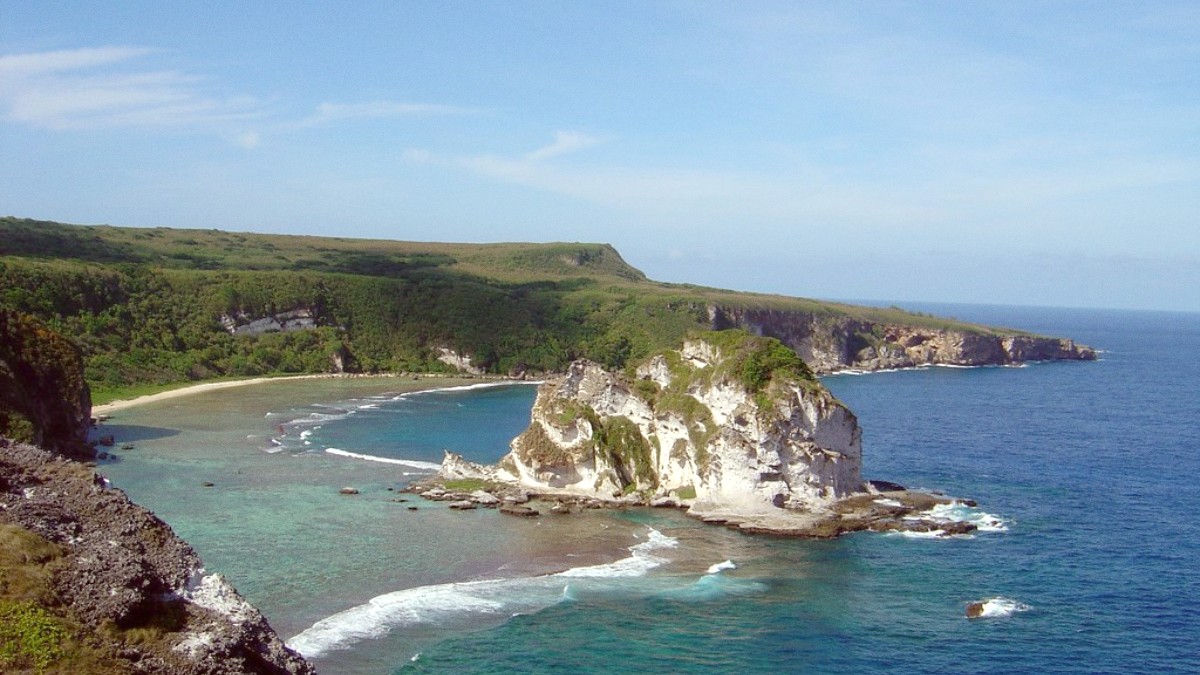
Northern Mariana Islands
Saipan has a tropical marine climate. This means consistently warm temperatures throughout the year. The island maintains an average temperature between 78°F (25.5°C) and 84°F (29°C). Humidity remains high, typically between 80-90%.
The dry season (December to June) presents less rainfall, lower humidity, and more sunshine. Trade winds bring a refreshing breeze. This season is popular with visitors seeking stable, sunny weather. Water visibility for diving and snorkeling is often at its best during these months. Skies are generally clearer, ideal for photography and outdoor excursions.
The dry season (December to June) offers the best visibility for diving and snorkeling due to calmer seas and less runoff. Beach activities greatly benefit from consistent sunshine during this period. For hiking and outdoor exploration, the dry season presents comfortable conditions and less muddy trails.
For cultural events, travelers should check local calendars, as these occur throughout the year, with major ones often coinciding with national holidays.
July to November
Typhoons can cause significant disruptions including heavy rain, strong winds, and flight cancellations. Monitoring forecasts is important.
While direct hits are not constant, they are more likely during these months. Extreme temperatures are rare.
Be Ready
Rain showers are often short and intense, not prolonged downpours. The landscape becomes lush and green.
Travelers during the wet season often experience a mix of sunshine and rain. Some outdoor activities might face limitations.
Budget Travel
The low season permits noticeable price reductions on flights and accommodation. Crowds are thin.
Travel during this time if budget is a main concern and you accept the weather risks.
The Northern Mariana Islands (NMI), including Saipan, operate as an U.S. Commonwealth. This influences entry requirements for visitors. U.S. Citizens and Nationals do not strictly need a visa or passport. However, a valid government-issued photo ID (like a driver's license) and proof of U.S. Citizenship (like a birth certificate) are recommended for smooth air travel. A U.S. Passport serves as the most convenient form of identification.
U.S. Permanent Residents (Green Card Holders) present their valid green card and a passport from their country of nationality. Citizens of Visa Waiver Program (VWP) Countries (e.g., Australia, Japan, South Korea, most Western European countries) entering under the U.S. Visa Waiver Program for up to 90 days need an approved ESTA (Electronic System for Travel Authorization) prior to travel. A valid passport is also needed. Obtain your ESTA well before your trip. Citizens of Specific Countries under the CNMI Visa Waiver Program (e.g., China, Russia) may enter the CNMI for up to 45 days without a visa. They meet specific criteria, including holding a valid machine-readable passport, having a confirmed onward or return ticket, and completing an I-736 form. This program differs from the general U.S. VWP. Other Nationalities generally need a valid U.S. Visa (B-1 for business, B-2 for tourism, or combined B-1/B-2). VisaHQ helps with visa and passport services.
For international visitors, a passport valid for at least six months beyond your intended stay.
Proof of an onward or return ticket is often needed for all non-U.S. Citizens.
Immigration officials may ask for proof of sufficient funds to cover your stay.
No specific entry fees for tourists entering Saipan. Upon arrival, all travelers pass through U.S. Customs and Border Protection (CBP) inspection.
Standard health screenings may be in place as U.S. Health authorities determine. No specific vaccination certificates are universally needed.
Prices reflect the island's remote location and reliance on imports. The official currency is the United States Dollar (USD). Currency exchange services are at banks and some larger hotels. ATMs are widely available across the island, accepting major credit and debit cards.
These are estimates and can fluctuate based on season and individual choices.
Major credit cards (Visa, MasterCard, American Express) are widely accepted at hotels, larger restaurants, and shops. Some smaller local establishments or markets operate on a cash-only basis.
These price ranges give a general idea for planning your budget.
Saipan is a generally safe destination. Knowing about health and safety practices aids confidence during travel. SafetyWing and World Nomads offer travel insurance.
Use High-SPF, broad-spectrum sunscreen (reef-safe options), wear sun-protective clothing, hats, and sunglasses. Stay hydrated. Consider carrying a Hydro Flask Wide Mouth Water Bottle.
Dengue fever outbreaks can occur. Use Insect repellent, especially at dawn and dusk. Sawyer Products Permethrin provides effective protection.
Exercise caution. Wear Water shoes or reef booties. Clean and disinfect any cuts immediately.
Commonwealth Healthcare Corporation (CHCC) is the main hospital.
Several private clinics are available for non-emergency issues. Pharmacies are available for prescription and over-the-counter medications. Quality of care is generally comparable to U.S. Standards.
For very serious medical emergencies, evacuation to Guam or Hawaii might become necessary. Tap water is generally considered safe to drink. Bottled water is widely available. Food hygiene standards are similar to U.S. Standards; eating at reputable establishments is wise.
Check official U.S. Customs and Border Protection websites for updated health advisories.
A comprehensive travel insurance policy covers medical emergencies and evacuation. Insubuy offers medical and travel-related coverage.
Includes trip cancellation or interruption, and lost or stolen luggage. Consider a policy from Allianz Travel Insurance.
Coverage for activities like diving if planned. AirHelp assists with flight compensation.
Saipan has a relatively low crime rate, especially for violent crime. Petty theft can occur, especially in tourist areas or crowded markets. Exercise standard precautions.
Having immediate access to emergency contact information is important for any travel scenario.
Dial 911 (Police, Fire, Ambulance)
+1 (670) 234-8950 (Main Hospital)
+1 (671) 646-4635 (for U.S. Citizens consular assistance)
Report the loss to local police first to obtain a police report. Then contact your embassy or consulate (if not an U.S. Citizen) or the U.S. Consulate in Guam for assistance with replacement travel documents.